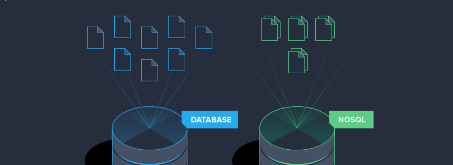Databases serve as the backbone of web applications, providing a structured and efficient way to store, retrieve, and manipulate data. When it comes to integrating databases with web development, developers have two primary options: SQL (Structured Query Language) and NoSQL (Not Only SQL) databases. In this blog, we will explore the concept of database integration in web development, the differences between SQL and NoSQL databases, and the considerations to keep in mind when connecting the back-end with either option.
Understanding SQL Databases:
SQL databases are based on a relational model, where data is stored in tables consisting of rows and columns. These databases use SQL as the query language to interact with the data. Here are some key characteristics of SQL databases:
Structure and Schema: SQL databases require a predefined schema that defines the structure and relationships between tables. The schema enforces data integrity and ensures consistent data storage.
ACID Compliance: SQL databases adhere to the ACID (Atomicity, Consistency, Isolation, Durability) principles, ensuring reliable and consistent transactions. These databases guarantee that transactions are either fully completed or rolled back in case of failure, maintaining data integrity.
Data Integrity and Relationships: SQL databases excel at managing complex relationships between different tables. They provide features like foreign keys and referential integrity, which maintain consistency and ensure that related data remains synchronized.
Understanding NoSQL Databases:
NoSQL databases, on the other hand, are designed to handle unstructured or semi-structured data. They provide flexibility, scalability, and better performance for certain use cases. Here are some key characteristics of NoSQL databases:
Schemaless Design: NoSQL databases do not enforce a rigid schema. They allow for dynamic and flexible data models, making it easier to adapt to changing requirements without the need for schema modifications.
Scalability and Performance: NoSQL databases are highly scalable, allowing for horizontal scaling across multiple nodes. They can handle large amounts of data and high traffic loads efficiently.
Data Model Variety: NoSQL databases offer various data models, including key-value, document, columnar, and graph databases. Each model is optimized for specific use cases, providing developers with flexibility in choosing the right model for their application's needs.
Database Integration in Web Development:
When integrating databases with web development, the process involves connecting the back-end code with the chosen database. Here are the general steps involved:
Selecting the Database: Assess your application's requirements and choose the appropriate database type—SQL or NoSQL—based on factors such as data structure, scalability needs, performance requirements, and development flexibility.
Configuring the Database: Set up the chosen database system and configure the necessary settings, including connection parameters, authentication, and database-specific configurations.
Establishing a Connection: Use the appropriate database driver or library to establish a connection between the back-end code and the database. Most programming languages offer libraries and frameworks that simplify this process.
Querying and Manipulating Data: Utilize the database-specific query language (SQL or the database-specific query syntax in NoSQL databases) to retrieve, insert, update, or delete data from the database. Execute queries and handle the returned results in your back-end code.
Considerations for SQL or NoSQL Integration:
When deciding between SQL and NoSQL integration, consider the following factors:
Data Structure and Relationships: If your application requires complex relationships between data entities, SQL databases with their structured and relational nature are a better fit. NoSQL databases are more suitable for unstructured or loosely structured data.
Scalability and Performance: If your application expects rapid growth or handles large volumes of data, NoSQL databases offer better scalability and performance due to their distributed nature and flexible data models.
Development Flexibility: NoSQL databases provide developers with more flexibility in terms of schema-less design, allowing for easier modifications and accommodating changing requirements. SQL databases may require more upfront planning due to their rigid schema.
Data Consistency and ACID Compliance: If your application deals with critical or financial data where maintaining data integrity and ACID compliance is crucial, SQL databases are the recommended choice.
Conclusion:
Database integration is a vital aspect of web development, enabling efficient storage and retrieval of data. Choosing the right type of database—SQL or NoSQL—depends on factors such as data structure, scalability needs, performance requirements, and development flexibility. SQL databases provide structured and relational storage with ACID compliance, while NoSQL databases offer flexibility, scalability, and performance advantages. Understanding these differences and considering the specific needs of your application will help you make an informed decision when connecting the back-end with SQL or NoSQL databases in web development.




Leave Comment